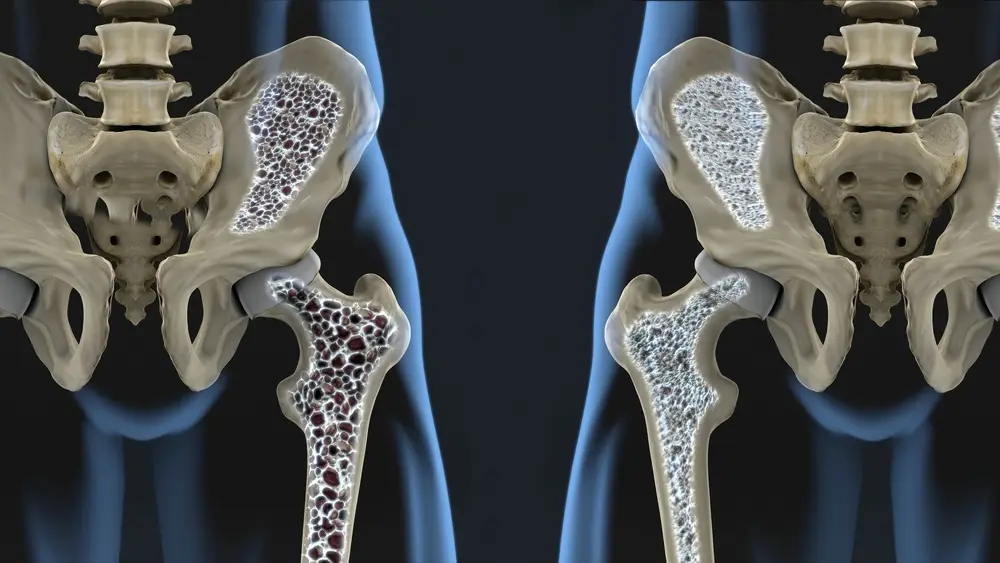Osteoporosis, a disease of the bones which occurs when a body loses more bone than it is making, can be a crippling condition for people who are 50 years and older. With this condition, bones become weak and can fracture with minor accidents such as bumping into furniture or falling. The spine specialists at Texas Back Institute examine and treat many of these patients for fractured vertebrae.
According to the National Osteoporosis Foundation, the term osteoporosis literally translates to “porous bone.” When observed under a microscope, a bone appears as a type of honeycomb. With this disease, the holes and spaces in the honeycomb are much bigger than they are in healthy bone.
The organization notes as bones lose density or mass “the structure of bone tissue becomes abnormal.” With a lack of bone density, they also become weaker and are more likely to break. Osteoporosis has traditionally been considered a female disease, typically occurring after menopause, but new research is showing men should be concerned as well.
Men Are Not Being Tested As Often as Women
Recent research conducted by Beth Israel Deaconess Medical Center in Boston and published in the Journal of Bone and Joint Surgery suggests a new demographic group should be concerned about osteoporosis: Men who are aged 50 and older. In the study of 440 people, who were older than 50 years, the research found women were about three times as likely as men to be tested using a bone density scan after suffering a fractured wrist or vertebrae – a warning sign of early osteoporosis.
Dr. Isador Lieberman, a spine surgeon at Texas Back Institute has treated many patients whose vertebrae have been fractured due to osteoporosis. Does he think more men are being affected by the disease than was previously thought?
“I do not think more men are affected,” he said. “We are just more cognizant of it and men are living longer.”
“Traditionally men are affected later in life,” Dr. Lieberman notes. “Men start off with a higher bone mass so they have more to lose before it becomes symptomatic.”
Fragility Fractures Should be Closely Evaluated
Dr. Lieberman notes that one of the areas where men tend to show effects of osteoporosis is a “fragility fracture” in the wrist or vertebrae. “These areas of the body are the vulnerable in both men and women,” he said. “As we age, we might lose balance and fall, landing on the outstretched wrist which is osteoporotic. Falling and fracturing a vertebrae, weakened by osteoporosis, is also very common.”
From a surgical or treatment standpoint, what can be done when either gender has a fragility fracture of their vertebra?
Dr. Lieberman notes, “Vertebral augmentations, also known as ‘vertebroplasty’ and ‘kyphoplasty‘ are very effective, minimally invasive treatment options. This involves the injection of cement into the hollow vertebrae to strengthen them.”
Dr. Lieberman agrees with the findings of this research: more extensive screening and testing of men who have the symptoms of osteoporosis – fragility fractures, over 50 years old – should be undertaken. He adds, “My TBI medical colleagues and I do bone-scans on anyone whose condition suggests osteoporosis. We have become much more involved in the treatment of osteoporosis, both medically and surgically.”
What can men or women do to avoid osteoporosis? Dr. Lieberman did not hesitate in his response.
“Exercise, exercise and exercise.” he said. “Also, take calcium supplements and vitamin D5, don’t smoke and limit alcohol intake. We treat many patients who have osteoporosis and they do very well.”
Are you 50 or older and concerned about osteoporosis? Contact us to see one of the spine specialists at Texas Back Institute.


